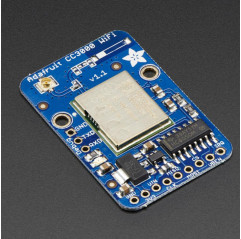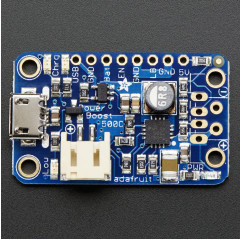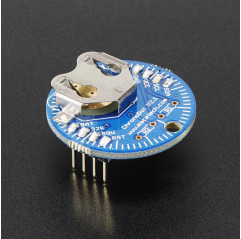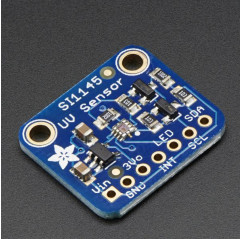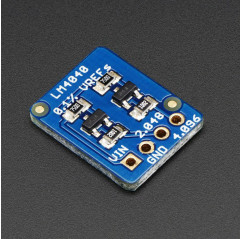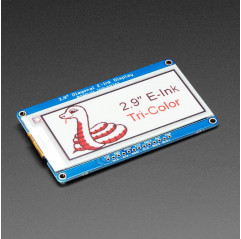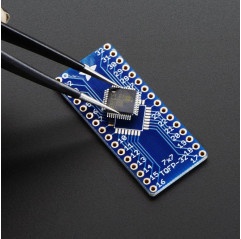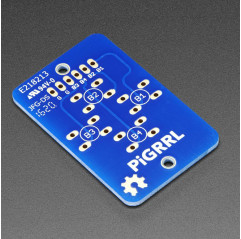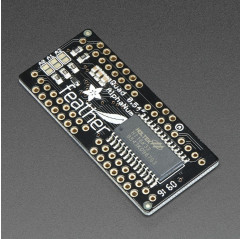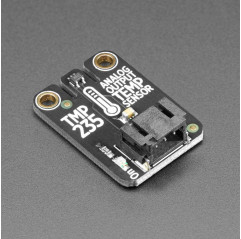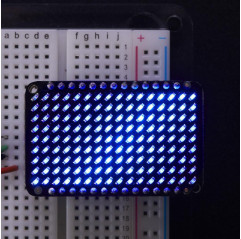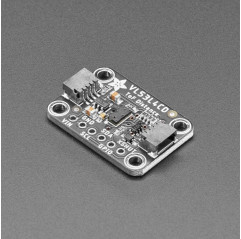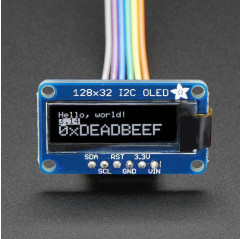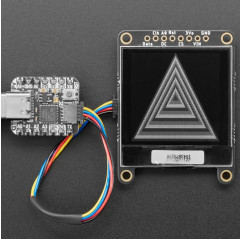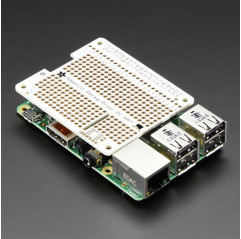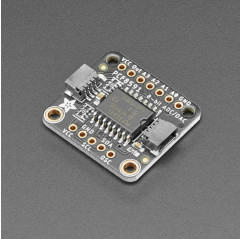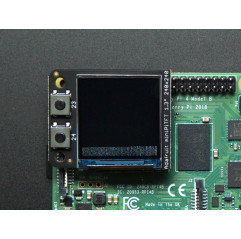The CC3000 hits the sweet spot of usability, price and capability. It uses SPI for communication (not UART!) so you can push data as fast as you want or as slow as you want.
It has a proper interrupt system with IRQ pin so you can have asynchronous connections. It supports 802.11b/g, open/WEP/WPA/WPA2 security, TKIP & AES. A built in TCP/IP stack with a "BSD socket" interface. TCP and UDP in both client and server mode, up to 4 concurrent sockets. It does not support "AP" mode, it can connect to an access point but it cannot be an access point.
Please note that the CC3000 module is being phased out and we suggest the WINC1500 as a replacement - it has SSL support, soft-AP capability, and is more reliable.
Adafruit wrapped this little silver module in a tidy breakout board. It has an onboard 3.3V regulator that can handle the 350mA peak current, and a level shifter to allow 3 or 5V logic level. This version of the CC3000 breakout does not have an onboard antenna - instead they placed a standard uFL connector so that an external 2.4GHz antenna can be used. You will need to purchase a uFL to RP-SMA adapter cable and a 2.4GHZ 'WiFi' antenna to use! This option can give you better range and makes it easier to enclose in a box. Adafruit use the same route and layout as TI's eval board, however, this module is no longer automatically FCC certified when an external antenna is used.
Each order comes with one fully assembled and tested breakout and a small stick of header you can use to solder in and plug into a breadboard. We don't have a detailed tutorial yet but to get you started, Adafruit have got a fully working Arduino library that is based off of TI's codebase but adapted for use with the AVR. They also have example code showing how to scan the SSID's, connect to your access point and run DHCP, do a DNS lookup to IP address, ping a site and connect to a remote TCP socket such as a website and print out the page.
Please note the hardware is good, but the library code does not yet support all of the CC3000's functionality. At this moment, SSID scanning, connection, DHCP, DNS lookup, ping, and UDP/TCP client & TCP server connections (eg connect to a website and grab data or host a very short website) all work and are tested with example code. Check out ths tutorial for wiring and Arduino library downloads
For use with Arduino Uno, Leonardo/Micro, & Mega only at this time - we'll try to get the code ported to the Due at some point but no ETA.
TECHNICAL DETAILS
Dimensions: 26.22mm / 1.03" x 40.45mm / 1.59" x 2.95mm / 0.11"
Weight: 3.46g
EagleCAD PCB files, schematics, and Fritzing Library available in the product tutorial






